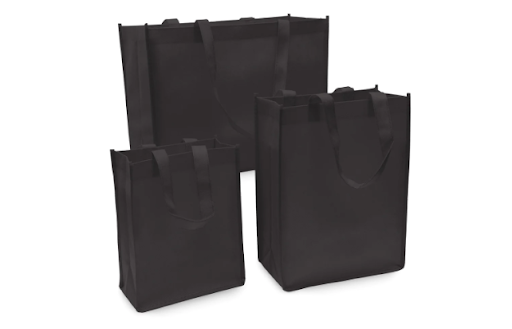Most people know by now that throwing away plastic bags is bad for the environment. If pictures of them suffocating sea turtles and clogging up huge parts of the Pacific Ocean weren’t enough to show how bad they are, the fact that many countries and states have outlawed them should be proof enough. Canvas, nylon, polypropylene, and nylon bags that can be used repeatedly are now the norm, and we’ll explain how large reusable shopping bags help the environment.
How Do Reusable Bags Help the Environment
It is always a good thing to use less plastic. Plastic is made from petroleum, and as a result of how it is made, factories that make it often let off or spill toxic waste. According to the Ecology Center, the main byproducts of producing plastic are sulfur oxides, methanol, ethylene oxide, nitrous oxides,and volatile organic compounds.
Toxins are made when plastic is made, but they are also made when plastic “breaks down.” The Ecology Center also says that many of the toxic chemicals in the environment come from the plastics industry. Large reusable shopping bags stop people from using and throwing away these thin, toxic sheets of plastic. They also make it less likely that more of these products will need to be made first.
Most Reusable Bags Are Made From Eco-Friendly Materials
Many reusable bags are made from materials that are good for the environment, such as jute, cotton, hemp, or bamboo. Most people think that these materials can be used again and again more than paper grocery bags. Many sources, like bamboo, hemp, and cotton, even turn greenhouse gases into oxygen that we can breathe instead of carbon like those made from petroleum.
But even bags made from recycled plastic that can be used more than once are better for the environment than regular plastic bags. These bags are made of polypropylene, often made from recycled plastic bottles.
Using Reusable Grocery Bags Cuts Down on Trash
Plastic bag litter is caused by both shoppers who aren’t careful and the bags themselves, which are poorly made. Bags that don’t weigh much can quickly get out of a trash can or a landfill. These bags are carried by the wind and can end up anywhere. They can clog drains and cause problems for people and animals alike.
Even now, it’s common to see trash-filled ecosystems that have been damaged, but the wide use of reusable bags is certainly helping. Reusable bags can last for years without needing to be fixed, recycled, or thrown away. Even though many of them are made of plastic (more specifically, polypropylene, a type of recycled plastic), throwing them away doesn’t cause as much pollution as throwing away their thin predecessors.
Are There Any Environmental Problems With Using Reusable Grocery Bags
There are a few bad things about reusable bags when it comes to the environment. First, the eco-friendliness of different materials varies a lot. Ice Green says that plastic breaks down through photodegradation, which needs sunlight. So, plastic floating in an ocean, like discarded plastic bags that can be used repeatedly, will eventually break down into toxic chemicals.
Many reusable bags take so much more material, water, and energy to make that the benefits to the environment don’t start to show until after they’ve been used a few times. ABC News says that most reusable bags need to be used at least 50 times before their benefits to the environment become clear.
Those numbers might make you think that single-use bags are better for the environment, but real-life things aren’t always that clear-cut. There are other things to consider, like how much trash these reusable bags make when given away for free without clear instructions on how to use them.
The less impact you have on the world, the more you should use your custom reusable shopping bags instead of disposable ones.











For the reason that the admin of this site is working no uncertainty very quickly it will be renowned due to its quality contents.
Hi there to all for the reason that I am genuinely keen of reading this website’s post to be updated on a regular basis. It carries pleasant stuff.
Great information shared.. really enjoyed reading this post thank you author for sharing this post .. appreciated
It’s nice to see the best quality content from such sites.
Comments are closed.